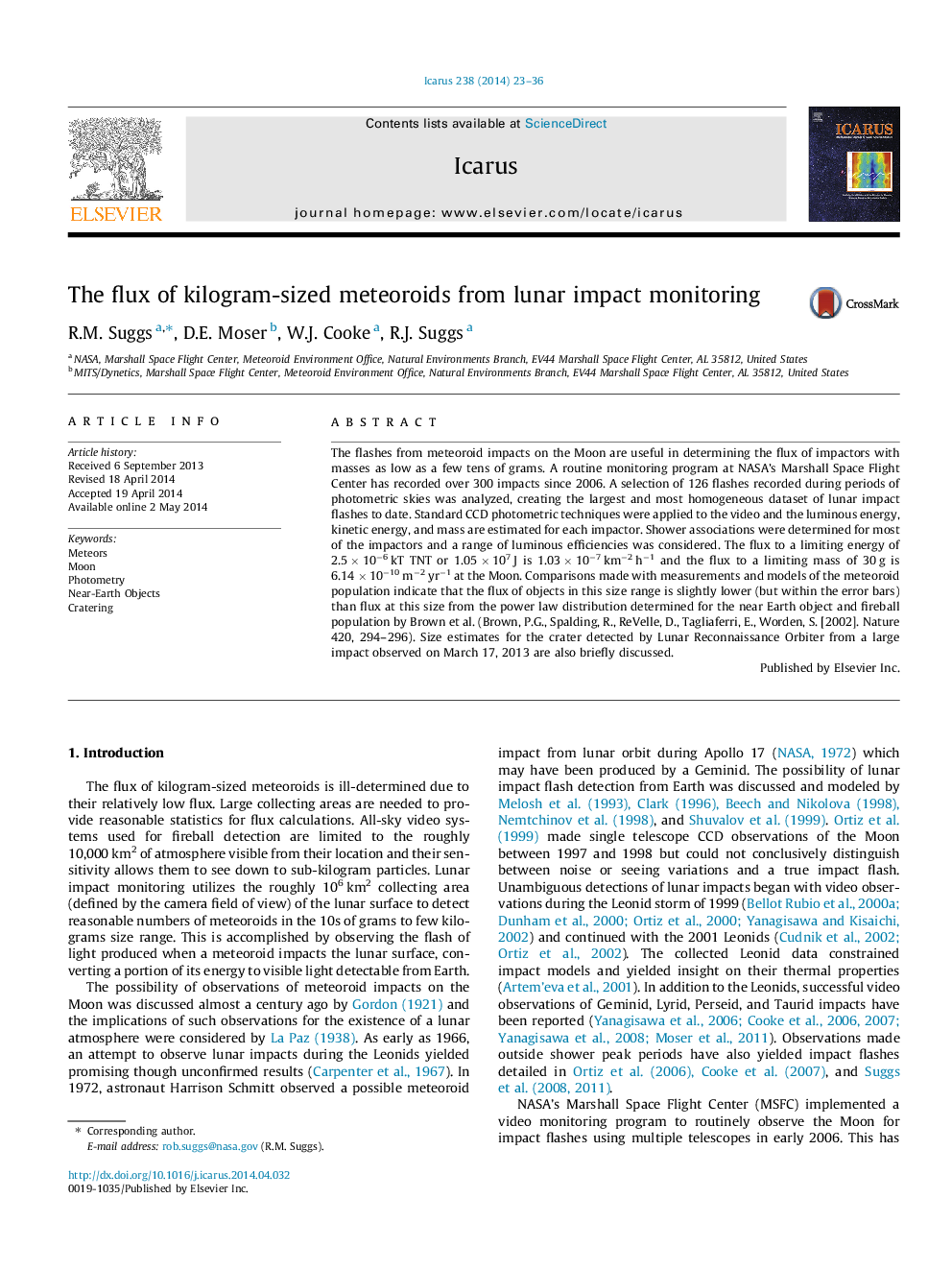| Article ID | Journal | Published Year | Pages | File Type |
|---|---|---|---|---|
| 1773119 | Icarus | 2014 | 14 Pages |
•Lunar impact monitoring has been used to determine the flux of meteoroids in the 30 g to a few kilograms size range.•A catalog of 126 photometrically calibrated impact flashes is presented.•A rigorous approach for photometric calibration of impact flash observations and calculation of flash energy is described.•Rates of observed flashes are correlated with meteor showers.•A large impact flash in March 2013 gave crater size estimates consistent with the crater measured by LRO.
The flashes from meteoroid impacts on the Moon are useful in determining the flux of impactors with masses as low as a few tens of grams. A routine monitoring program at NASA’s Marshall Space Flight Center has recorded over 300 impacts since 2006. A selection of 126 flashes recorded during periods of photometric skies was analyzed, creating the largest and most homogeneous dataset of lunar impact flashes to date. Standard CCD photometric techniques were applied to the video and the luminous energy, kinetic energy, and mass are estimated for each impactor. Shower associations were determined for most of the impactors and a range of luminous efficiencies was considered. The flux to a limiting energy of 2.5 × 10−6 kT TNT or 1.05 × 107 J is 1.03 × 10−7 km−2 h−1 and the flux to a limiting mass of 30 g is 6.14 × 10−10 m−2 yr−1 at the Moon. Comparisons made with measurements and models of the meteoroid population indicate that the flux of objects in this size range is slightly lower (but within the error bars) than flux at this size from the power law distribution determined for the near Earth object and fireball population by Brown et al. (Brown, P.G., Spalding, R., ReVelle, D., Tagliaferri, E., Worden, S. [2002]. Nature 420, 294–296). Size estimates for the crater detected by Lunar Reconnaissance Orbiter from a large impact observed on March 17, 2013 are also briefly discussed.
